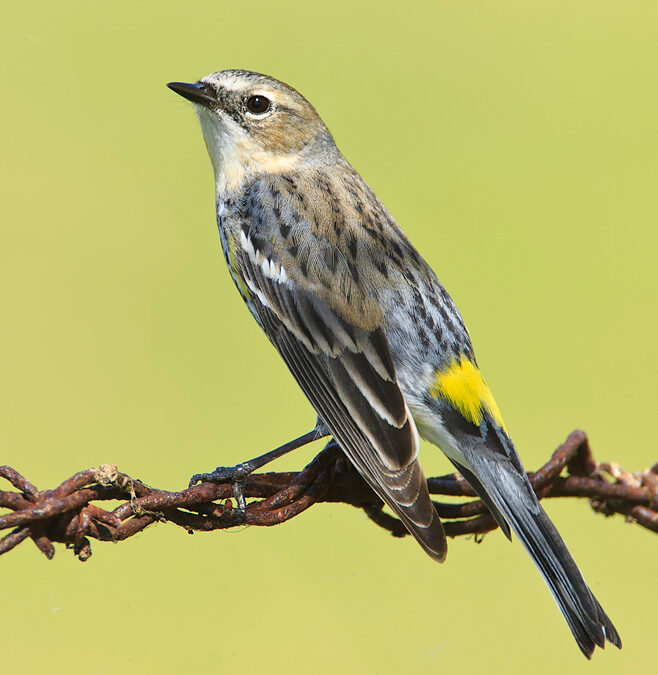
by Scott Martin Photography | Apr 11, 2013 | Birds, Blog, Shore Birds & Waterfowl, Warblers
Although we are expecting a snow storm tomorrow, the early migrants are returning to the area after wintering down south. It’s great to hear their songs every morning as I leave for the office. Probably my favourite birds to photograph in the spring are the many warblers that pass through the Oshawa area in May & June. Oshawa is a unique warbler location as there is a small woods next to the lake that contains the only remaining “Old World” White Pine stand on the North West shore of Lake Ontario and many of the warblers desire this unique habitat. One of the more common warbler species is the Yellow-rumped Warbler and we were fortunate to photograph one while in Florida last month.
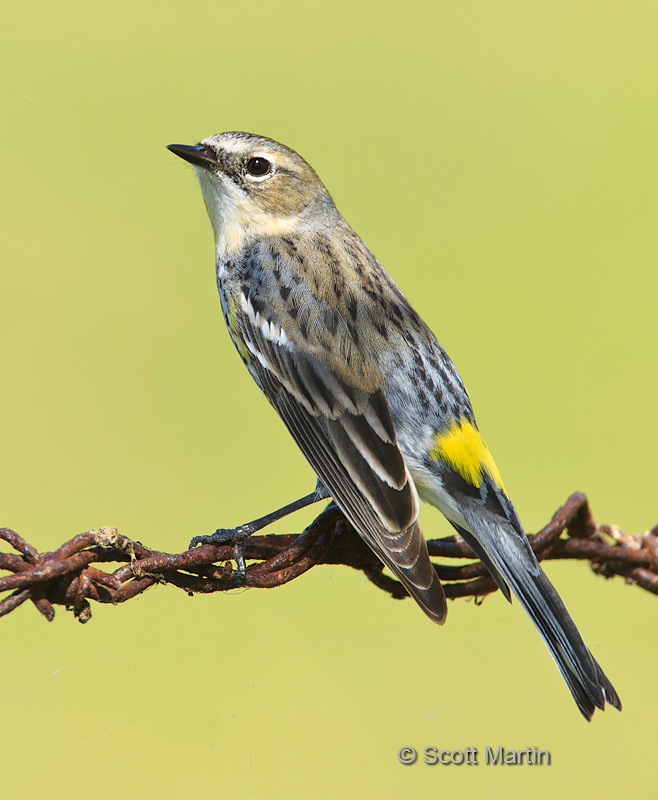
.
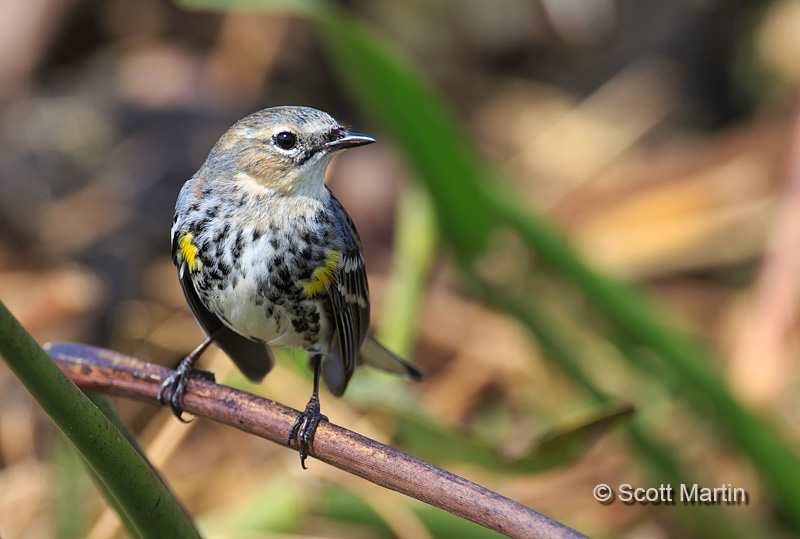
.
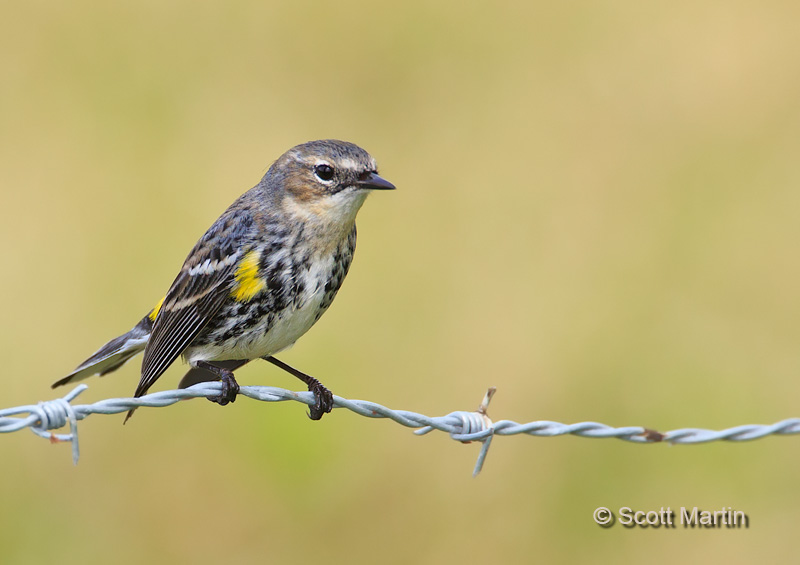
Normally we don’t post images on man-made perches, however a nice pose against a clean back ground makes the barbed wire seem not quite as bad!
This Yellow-rump was photographed at Lake Kissimmee in Florida at the end of Joe Overstreet Road. Other warbler images can be seen by following this link to the Warbler Gallery.
While in Florida visiting the Merritt Island Nature & Wildlife Preserve we were fortunate to photograph a number of Lesser Scaups. Lesser Scaup’s prefer fresh water (Greater Scaups like salt water) and are one of the most abundant diving ducks in north America although in recent years their numbers have been in sharp decline. Even though Scaups are common, this was the first time Deb and I had ever seen or photographed them.
Male in breeding plumage.
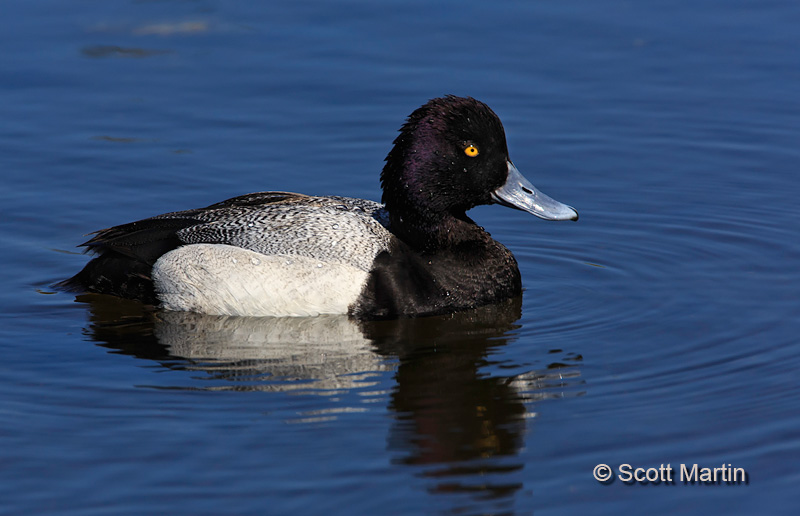
This next image is not as visually appealing as the previous image because the reflection of the head is cut of by the bottom of the frame, however it does clearly show the unique marking on the distal aspect of the bill, which is why it is included in this post. Any elements of visual importance in an image tend to detract from the image when they touch the edge of the frame so try to leave ample room around your subject when out taking pictures. You can always crop the image in post processing, however when you crop the image “in the camera” like I did in this next shot, you are stuck with less than ideal results.
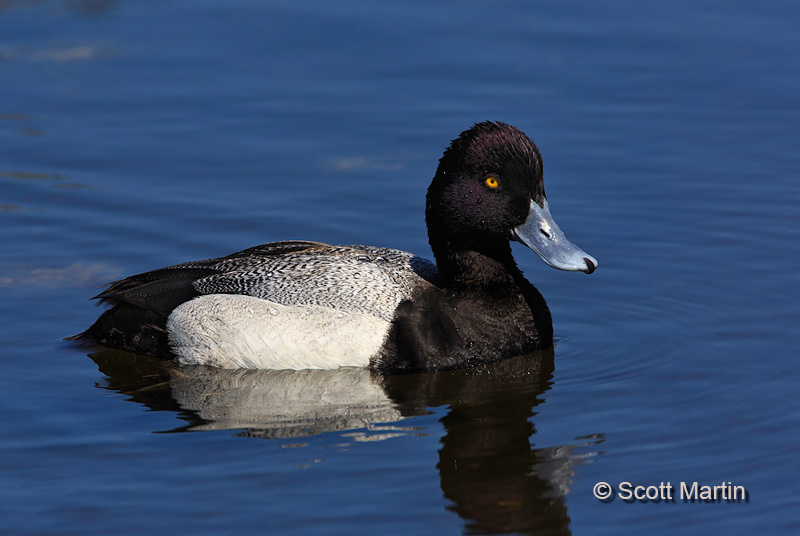
Non breeding male plumage or a young male.
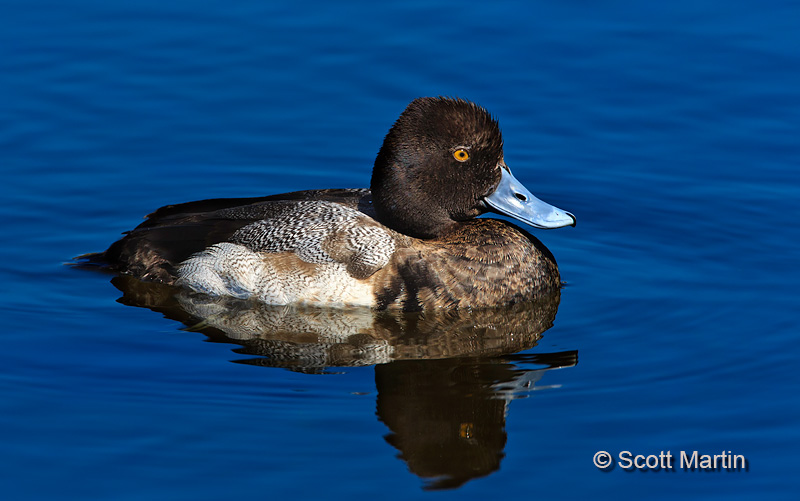
Female Lesser Scaup.
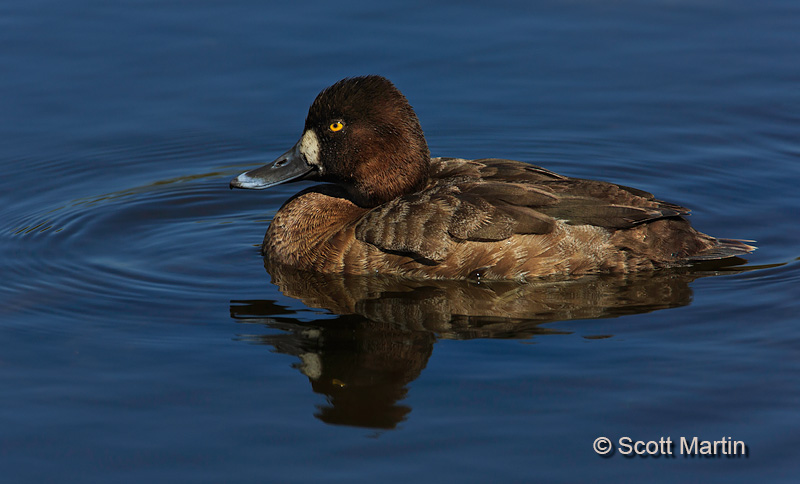
.
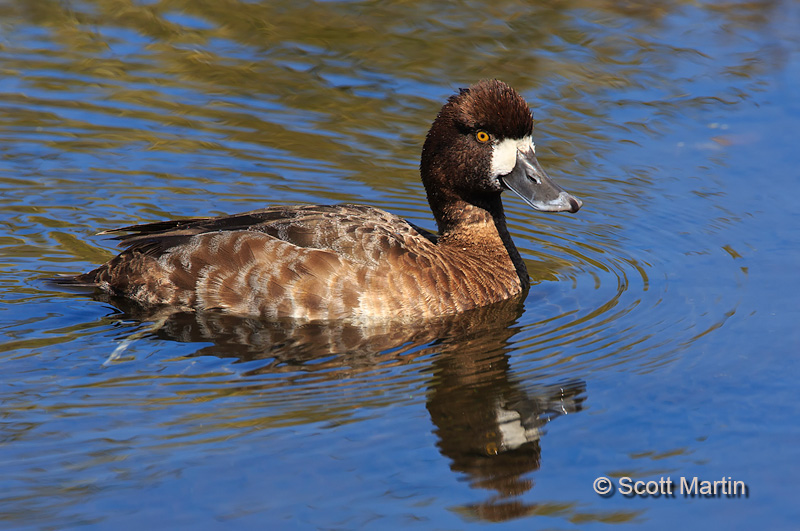
All images in this post were taken with a Canon 5D Mk III and EF 500mm L IS lens supported on a Jobu monopod and Jobu Jr. 3 gimbal head.
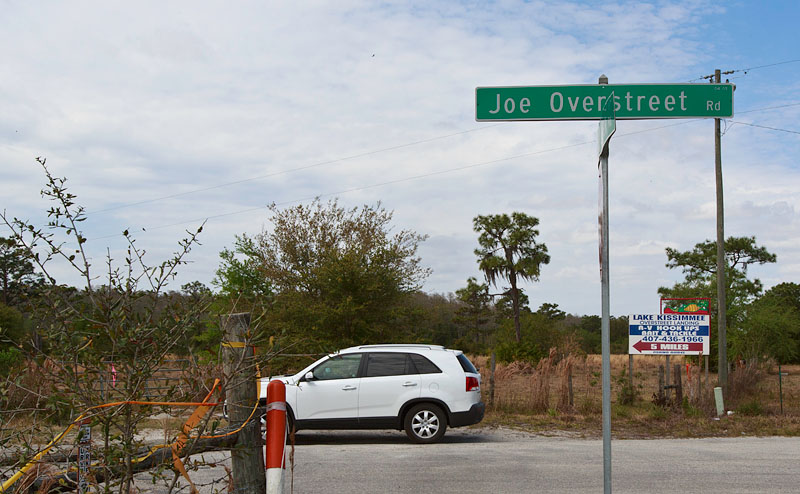
by Scott Martin Photography | Mar 29, 2013 | Birds, Blog, Raptors, Shore Birds & Waterfowl
Birders and bird photographers traveling to Florida need to make it a priority to travel the five miles along Joe Overstreet Road; a gravel road that ends at the shores of Lake Kissimmee. The variety and quantity of birds that are experienced never disappoint. Deb and I have been making the trip for a number of years now, and although we often see Eagles from afar, this year a couple of mature Eagles, flying with a group of Black Headed Vultures, made a pass fairly close overhead. It was quite a surprise as I was at the water’s edge photographing a Wilson’s Snipe which had been actively foraging for quite a while when suddenly it dove for cover and hunched down on its belly, a sure sign that it was troubled by something. When a bird acts like this it is a sure sign to look up, which I did, expecting to see a hawk overhead, however this time it was a Bald Eagle about thirty feet above my head.
A rather inauspicious entrance to a fabulous birding experience.

The Wilson’s Snipe that alerted me to the Eagles (note the meal he has just extracted from the mud).
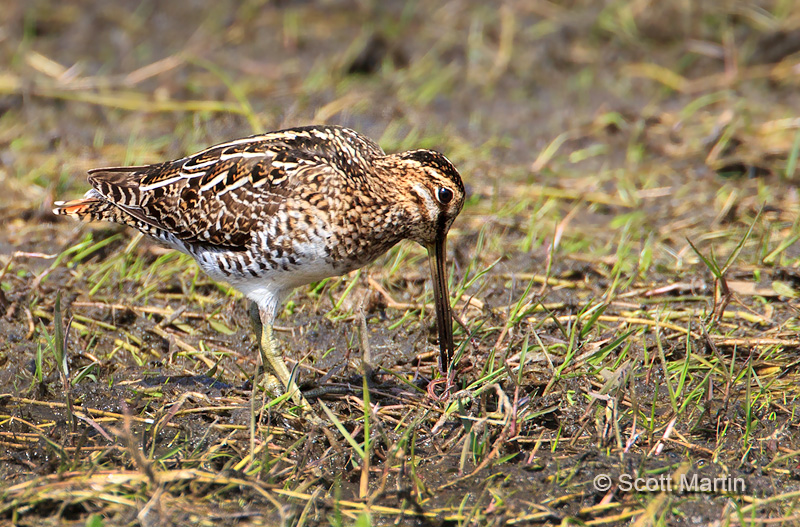
The Bald Eagle is one of the most well known birds in the world, certainly among the Americans who have claimed the Eagle as their National Bird since 1782 and it appears as the central figure in the American Seal. Bald Eagles have a lifespan in the wild of up to forty years and in captivity have lived even longer, although in the late 20th century they were on the brink of extinction due to hunting and the effects of DDT use. In 1963 there were only 417 known pairs and due to concentrated conservation efforts that number increased to 10,000 by 2006. The Bald Eagle is now a common bird in the United States and its name was removed from the list of American Endangered and Threatened Wildlife Species in 2007.
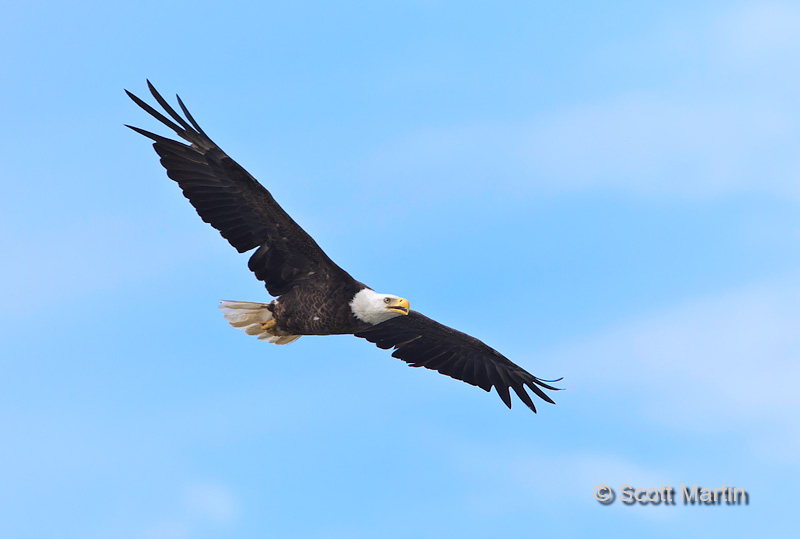
.
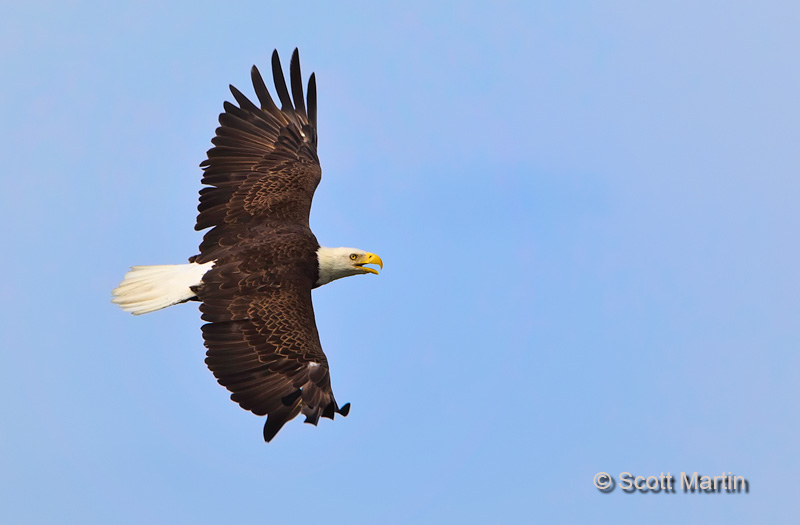
.
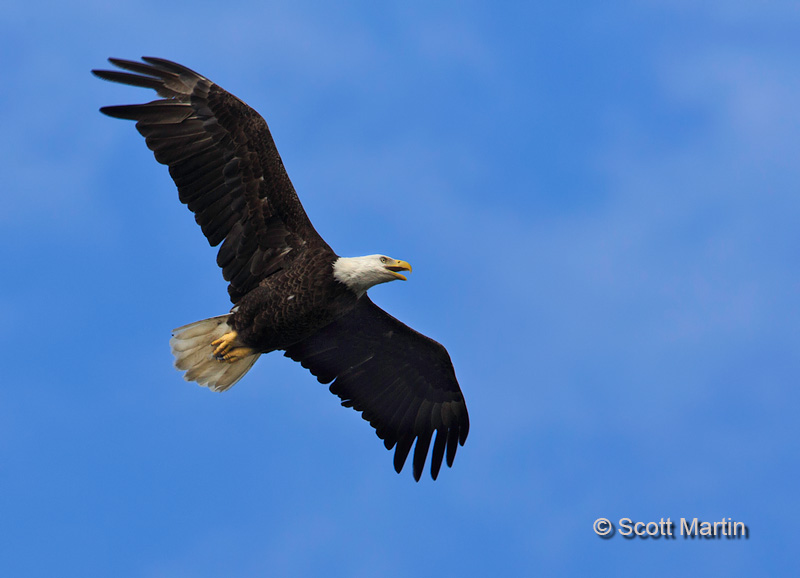
The Eagle images in this post were captured using a Canon 5D MkIII with a 1.4 x TC and 500mm f/4 lens which is not typical gear for inflight bird photography. The camera has a slow frame rate and the use of the teleconverter slows down the auto-focus speed. Both of these issues conspire to reduce the keeper rate so I was pleased to get a few good frames.
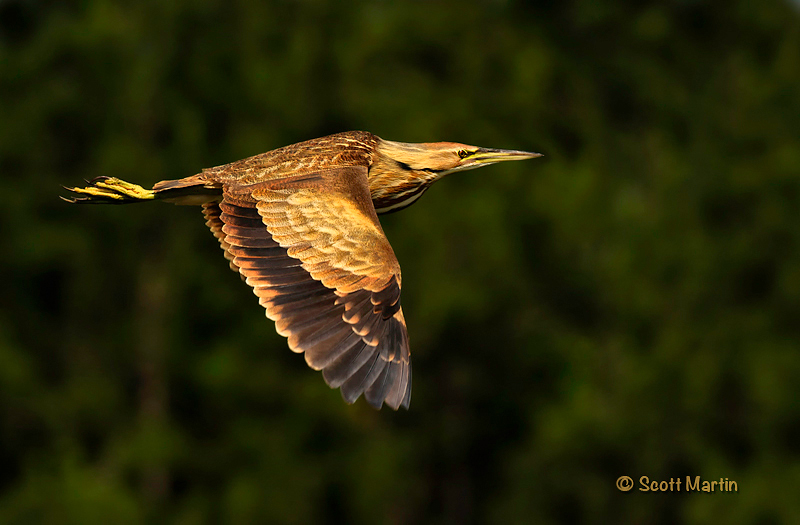
by Scott Martin Photography | Mar 29, 2012 | Birds, Blog, Shore Birds & Waterfowl
While vacationing in Florida two weeks ago, Deb and I visited the Orlando Wetlands Park in Christmas Florida. The park is actually about 45 minutes North East of Orlando, approximately twenty miles East of Merritt Island. It’s a fabulous wetland area that is 1650 acres in size and contains over twenty miles of hiking trails. Bicycles are allowed however cars are not, so be prepared to do a lot of walking when you are there. Deb and I didn’t have a lot of time available so we did an enjoyable six-mile loop seeing everything from rattle snakes, to alligators, to garpike and many different bird species, including the America Bittern shown in this post.
The American Bittern is a member of the Heron Family and in the summer months can be found in Canada. It winters in the south. Although the American Bittern is a common bird it is not often seen as it has the unique ability to blend well into the reeds in which it spends most of its time. They are typically solitary birds and when approached they often stay in one spot, extend their neck and point their head straight up into the air and in doing so blend right into their surroundings. They will even slowly sway their necks back & forth simulating the reeds moving in the wind. Consequently they are birds that are more often heard than seen which makes every nature and bird photographer happy when they finally get to capture one ‘on film’.
The Bittern below didn’t follow the usual pattern and flushed when Deb and walked by without knowing it was there. In fact we were startled when it flew up about ten feet beside us and headed to another location. Fortunately I had just enough time to get about six frames of the bird as he passed by us. Having a dark back ground for one of the shots was a bonus!

The wing detail in the American Bittern is impressive whether viewed from above or below.
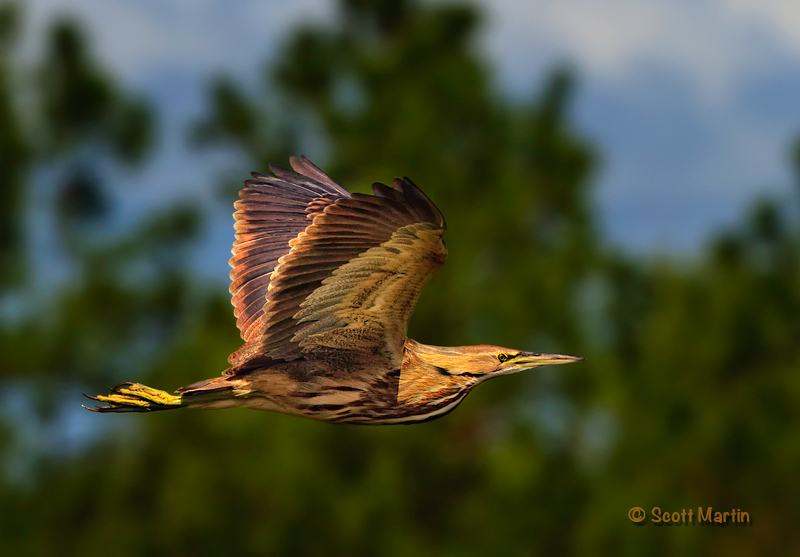
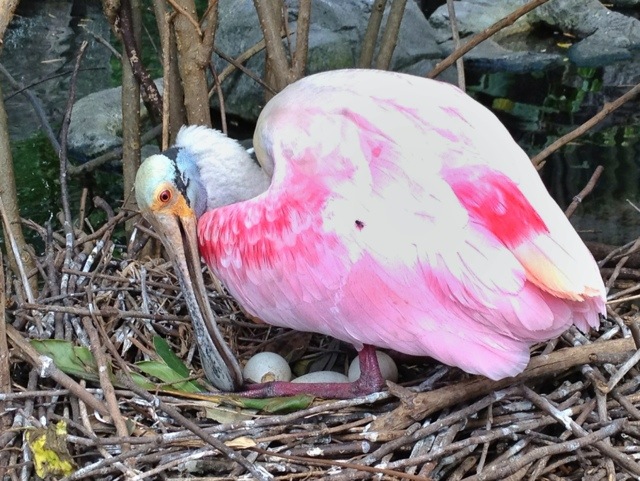
by Scott Martin Photography | Mar 16, 2012 | Birds, Blog, Shore Birds & Waterfowl, Travel
The Roseate Spoonbill has always been a favourite of mine and every trip to Florida we try to get a few shots of them. This year provided an interesting opportunity to photograph a Spoonbill with an iPhone. So please excuse the blown highlights in this image, but exposure control on the iPhone is not as user friendly as it should be 🙂
The Roseate Spoonbill is a bird who’s beak is ideally designed to allow it to eat effectively. The Spoonbill eats by waving the broad spoon shaped end of its beak in shallow water, disturbing the water and silt beneath it. It has very sensitive nerve cells that cause the beak to reflexly snap shut when prey is detected. The vibrant pink colours the Spoonbill takes on as it matures (they are born white) is a result of carotenoid pigments in algae which are consumed by crustaceans and then in turn eaten by the spoonbills. The Spoonbill’s nostrils are located at the base of their beaks so they are able to breath while the spoon end of the bill is submerged while foraging.
The following image was shot with the iPhone 4S and processed with the Snapseed app designed by NIK Software.

28.335975-81.53299
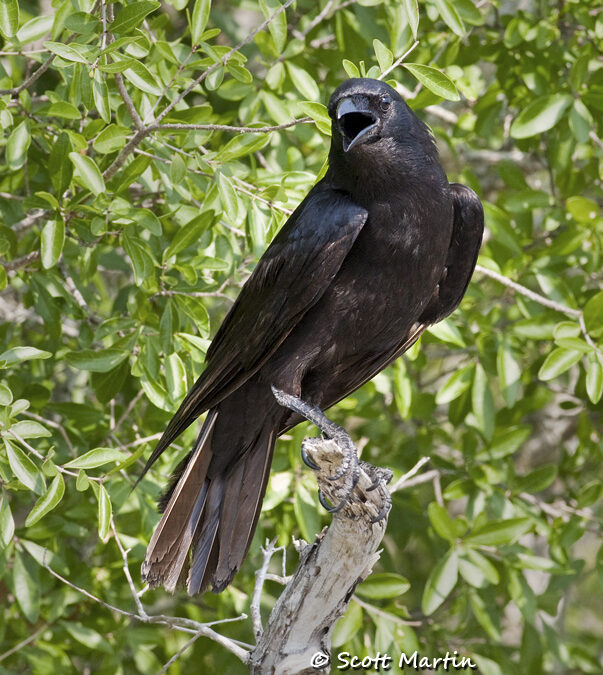
by Scott Martin Photography | Jun 10, 2011 | Birds, Blog, Shore Birds & Waterfowl
Photographing black and white birds always creates an exposure challenge, that if not properly addressed results in overexposed whites and underexposed blacks. Both of these situations result in images destined for the trash bin as the detail in the shadows and highlights is underexposed in the former and blown out forever in the latter. Sometimes getting the right exposure is counter intuitive unless you think about how the light meter in your camera works. You camera’s light meter sees grays, not blacks and whites, and it is designed to provide the proper exposure for a neutral gray. Approximately 18% of the light that strikes a neutral gray is reflected, and its the reflected light that your meter reads to calculate exposures. The problem arises in that whites reflect about 36% of the incident light while blacks only reflect about 9% and your camera is calibrated to base its exposures assuming an 18% reflectance. This is why if you shoot in an automatic mode, making no exposure compensation, your camera will underexpose predominantly white scenes (a snow-covered field) and overexpose predominantly black scenes (an asphalt parking lot) making both look rather dull or gray in appearance. In order to make colours pop you need to add 2/3 to 1 stop when shooting winter scenes and take 2/3 to 1 stop less when shooting parking lots and coal pits!
When shooting black and white birds the exposure challenge is a little different in that the bird generally occupies 1/3 to 1/2 of the frame, while the camera meters the whole frame and sets the exposure reading accordingly. This generally overexposes the white birds and underexposes the dark birds unless you make the required compensation.
Although many times you don’t get a second chance at a bird, especially when they are in flight, always check the histogram to make certain the whites are not overexposed (the right side of the histogram should be close to, but not touch, the right vertical axis). If you can, set your camera to ‘highlight alert’ which will cause overexposed areas on an image to blink when viewed on the camera’s LCD. These two things will help you easily recognize overexposure after the fact and allow you to make the required corrections for the next images.
The first two images are of a Fish Crow, taken at the Ding Darling National Wildlife Refuge on Sanibel Island in Florida. Taken with a 400/5.6 lens and the exposure was increased 1/3 stop to help bring out the detail in the shadows but still retain the dark colour of the crow.
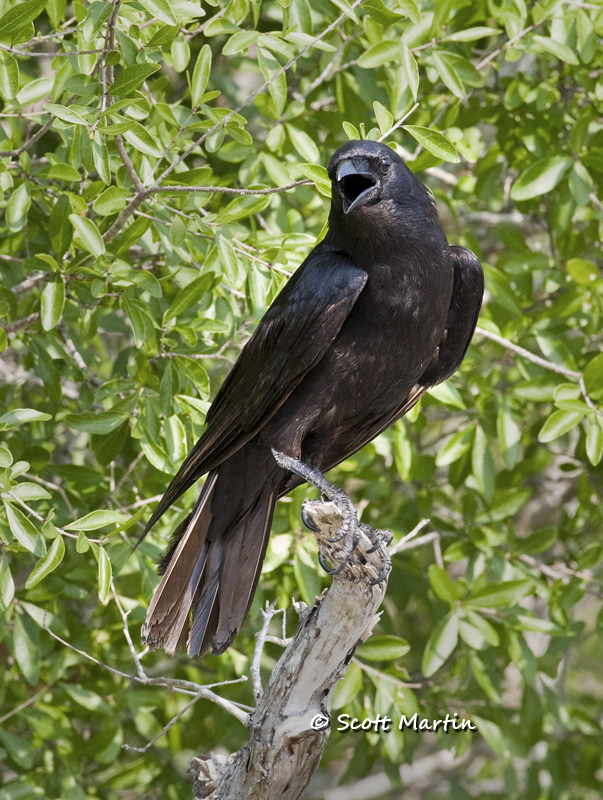
.
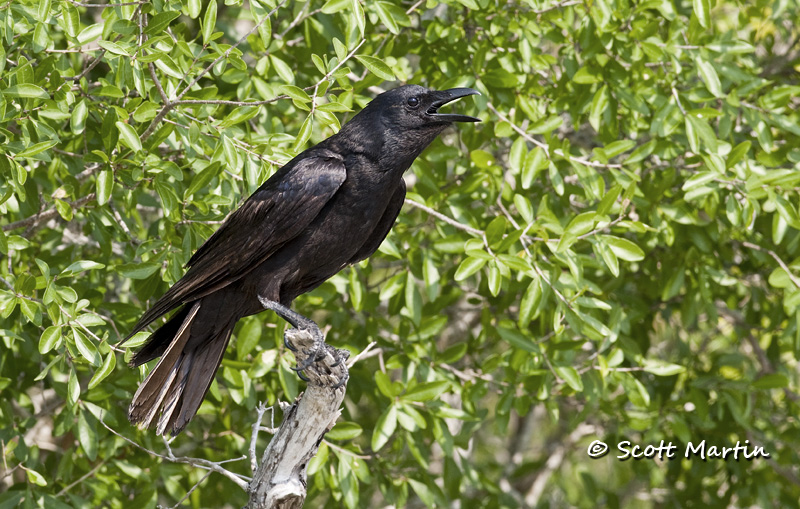
The White Ibis was taken with the same lens, however the exposure was 1 1/3 fewer stops than the meter indicated so none of the whites were overexposed.
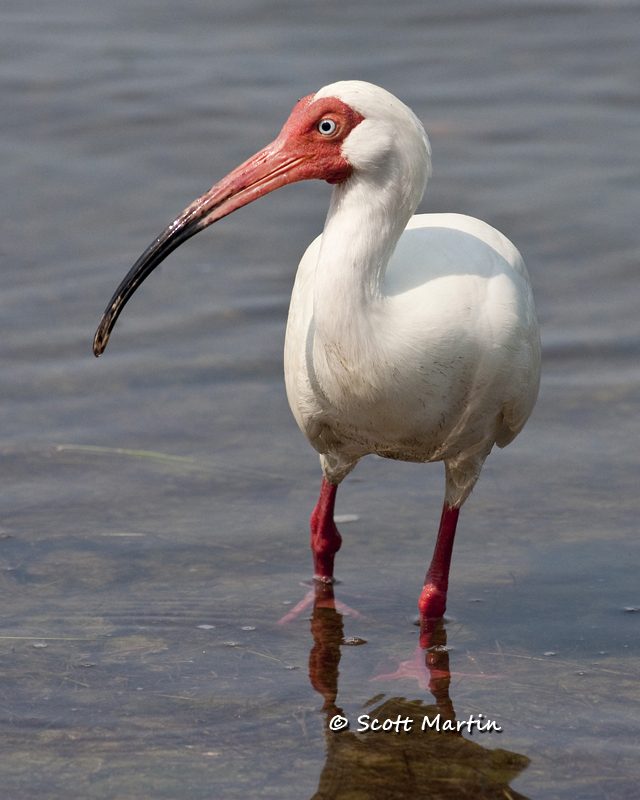
.
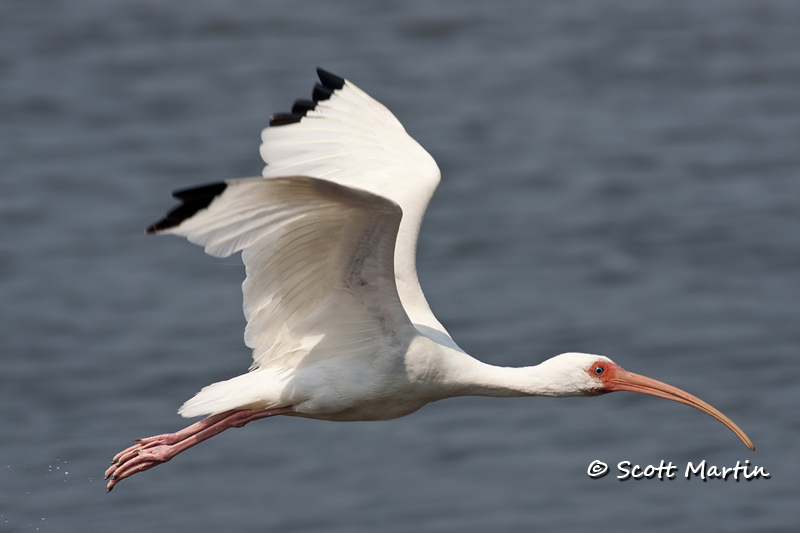
It was a real treat to have my favourite Egret, the Snowy Egret fly by at fairly close range. Their black legs, bright yellow feet any punky crown make for great pictures….as long as you get the exposure right 🙂
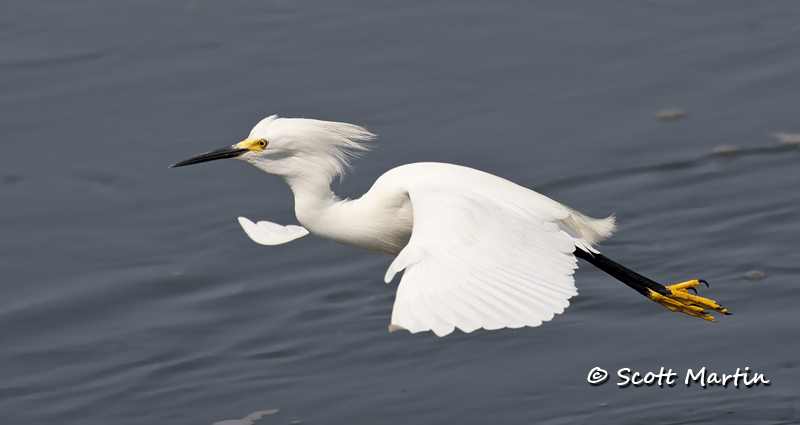
For lots more shots of Ibis and Egrets please check out the Wading & Shore Birds Gallery
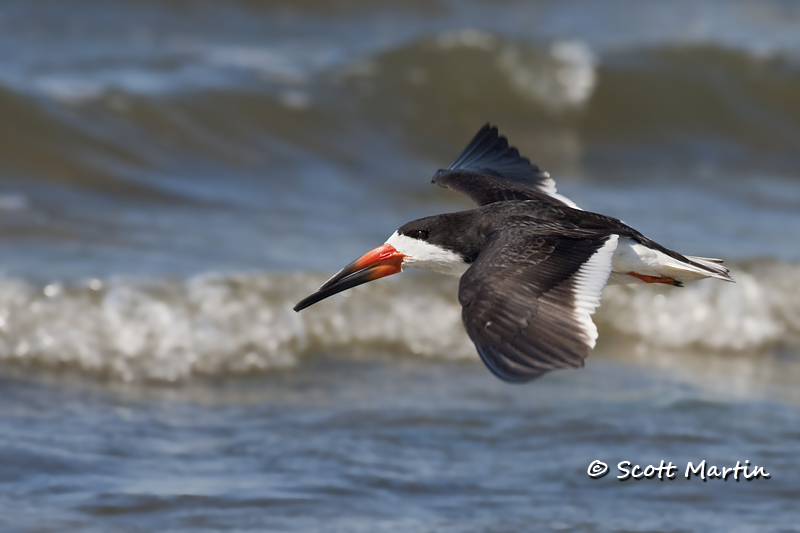
by Scott Martin Photography | May 16, 2011 | Birds, Blog, Shore Birds & Waterfowl
The Black Skimmer is a peculiar looking bird because of its uniquely designed bright orange, black tipped bill which features a lower mandible that is much longer than the upper (the only bird in North America with such a beak). The skimmer feeds on fish and shrimp which it forages by flying low over the water with its lower mandible slicing through the water. When it senses a fish or shrimp it clamps its jaw tight and seizes its prey. While skimming, the water flowing into the lower jaw exits out through an exhaust vent at the base of the bill which is an amazing phenomenon to see.
The Black Skimmer is a fairly large bird approximately 18-20″ in length with a wing span up to four feet in an adult. At birth the mandibles are the same length however by the time they have fledged (about four weeks old) the lower mandible is already nearly 1 cm longer than the upper.
The Black Skimmer lays its eggs in a simple scrape on the ground, usually in a beach area, and rarely has any nest material associated with it. The incubation period is 21-23 days with both parents taking part in the process. One of the biggest threats to skimmer nests is via public encroachment by people who inadvertently trample the eggs. For this reason known skimmer nesting areas are cordoned off during the spring nesting season.
The following images were taken in March of this year at the Merritt Island National Wildlife Refuge in Florida while Deb & I were waiting to photograph a rocket launch from the Kennedy Space Center which is also located on Merritt Island.
This in flight shot shows the unique bill design for which the Black Skimmer is notorious.

A group of these birds are known as a “Conspiracy”, “Embezzlement” or “Scoop” of Black Skimmers.
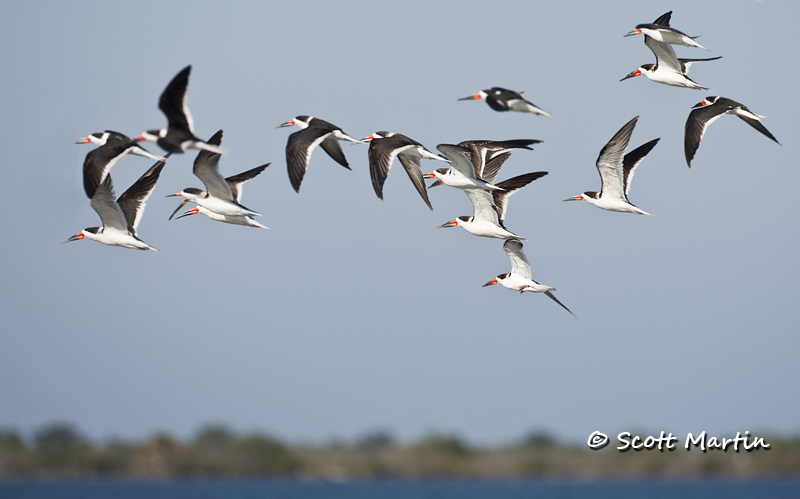
More Black Skimmer images can be seen in the Gulls, Terns & Skimmers Gallery






























Follow Scott Martin Photography